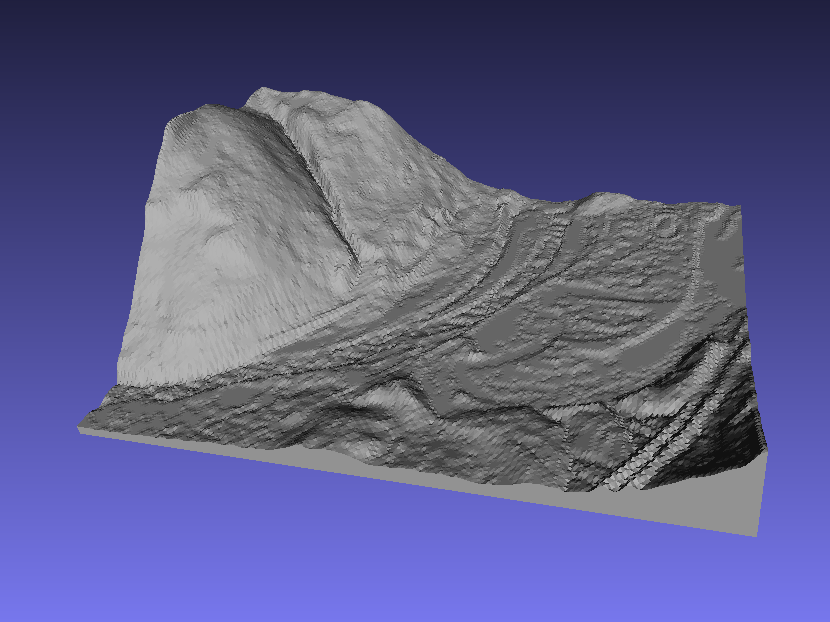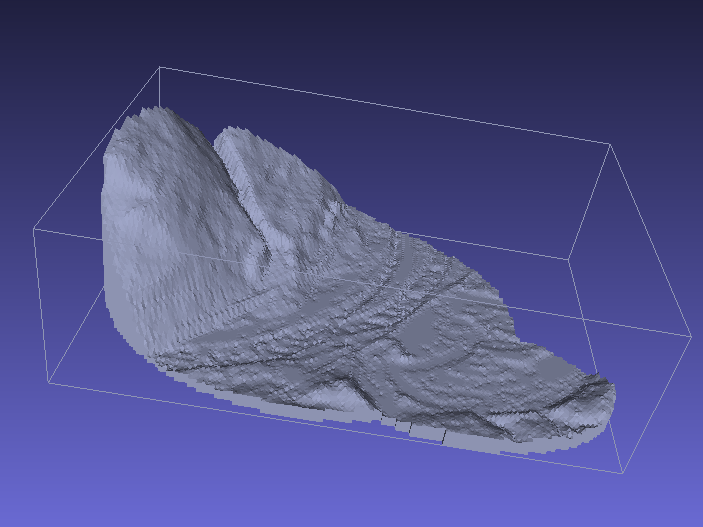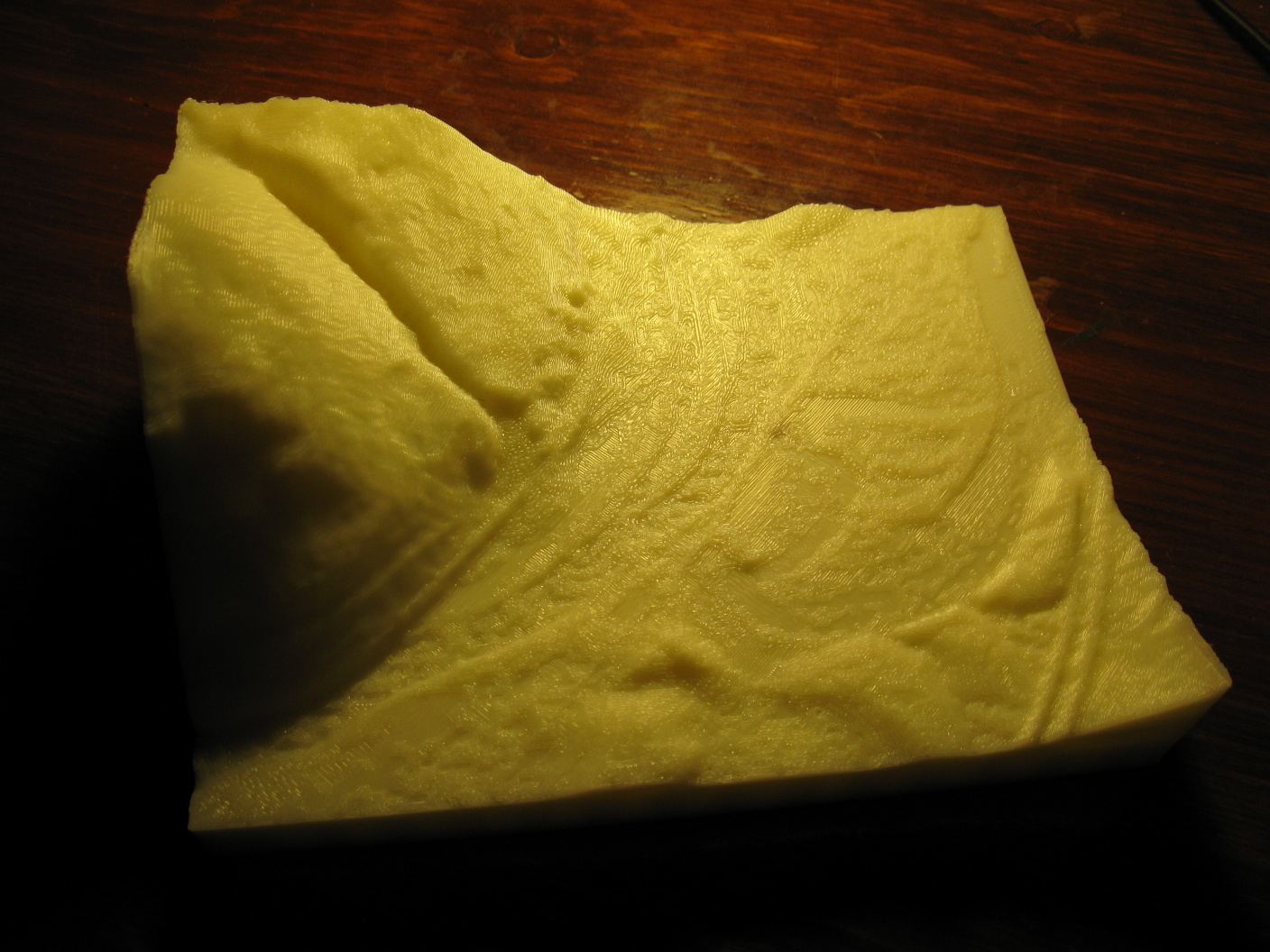hmstl is a simple program to convert heightmap images to 3D models. The output format is STL.
hmstl requires libtrix, my rudimentary C library for generating STL files from triangle lists.
Compile hmstl with:
make hmstl
By default, hmstl can be used as a filter to convert heightmap images on standard input to STL models on standard output. The following options are also supported:
-i INPUTread heightmap image from the specifiedINPUTfile. Otherwise, read heightmap image from standard input.-o OUTPUTwrite STL data to the specifiedOUTPUTfile. Otherwise, write STL data to standard output.-z SCALEmultiple heightmap values bySCALE. Default:1-b HEIGHTset base thickness toHEIGHT. Default and minimum:1-sterrain surface only; omits base walls and bottom-aoutput ASCII STL instead of default binary STL
The following options apply a mask to the heightmap. Only the portion of the heightmap visible through the mask is output. This can be used to generate models of areas with non-rectangular boundaries.
-m MASKload mask image from the specifiedMASKfile. Dimensions must match heightmap dimensions.-t THRESHOLDconsider mask values equal to or less thanTHRESHOLDto be opaque. Default:127(in range 0..255)-has an alternative to-m, use the heightmap as its own mask; elevations belowTHRESHOLDare considered masked.-rreverse mask interpretation (swap transparent and opaque areas)
Supported input image formats include JPG (excluding progressive JPG), PNG, GIF, and BMP. Color images are interpreted as grayscale based on pixel luminance (0.3 R, 0.59 G, 0.11 B).
Create an STL model of tests/scene.pgm, the heightmap image above, with the following command. The -z option is used to scale height values; an appropriate value depends on dataset resolution and desired exaggeration.
hmstl -z 0.25 < tests/scene.png > tests/scene.stl
Here is the output displayed in Meshlab:
Here is a contrived masking example using the same heightmap and a compound oval mask:
hmstl -z 0.25 -i tests/scene.png -m tests/mask.png -o tests/blob.stl
Here is a photo of a Makerbot printing of the scene-thick sample model:
Each pixel in the input heightmap is output as a unit quad (1 unit extent in xy plane) comprised of two triangles. By default, Z values are assumed to use the same units; use the -z option to set the correct scale.
The upper left pixel of the input heightmap is output centered at x/y 0/h, where h is the y extent of the heightmap, with the bottom of the model at z 0. Because the output pixel quads are 1 unit square centered over the pixel coordinates, the actual upper left extent of the output model is at -0.5, h + 0.5.
Meshlab's Quadric Edge Collapse Decimation filter is suitable for simplifying hmstl output to reduce the number of faces without losing important features. Use various constraints such as Preserve Boundary or Planar Simplification to ensure original edges are preserved.
Freely distributed under an MIT License. See the LICENSE files for details.
Heightmap images are loaded using Sean Barrett's public domain stb_image.c library.



